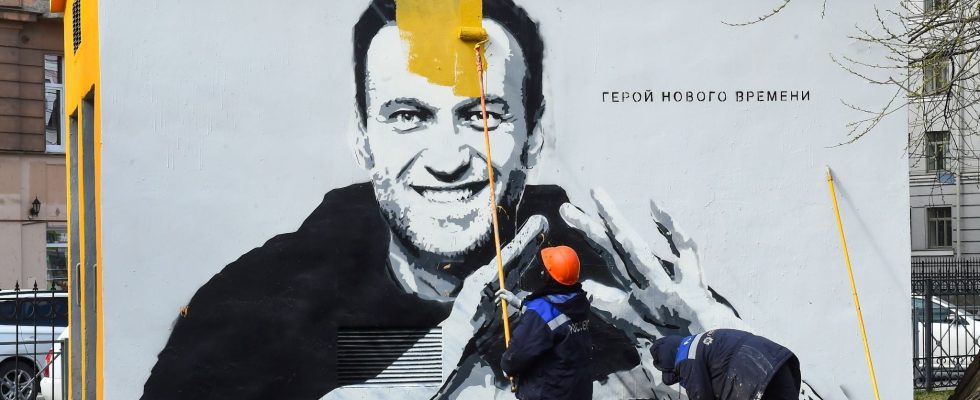“We have a plan,” repeated Alexeï Navalny’s lieutenants. It was in January 2021: a few months after miraculously surviving an attempted Novichok poisoning, the opponent decided to return to Russia. Targeted by several investigations, promised to be imprisoned, Alexeï Navalny was arrested upon his arrival at Shemeretievo airport. There was little doubt about the outcome of his trial. But Navalny would not stay in prison for long, assured the leaders of his association, the Anti-Corruption Fund (FBK).
Two days after the opponent’s arrest, they put their plan into action. A video investigation, the largest and most ambitious ever published by the FBK, reveals the existence of a “Putin palace” of extravagant wealth, and exposes the personal enrichment of the Russian president and his entourage . In just a few days, it was viewed hundreds of millions of times. In the weeks that followed, in Moscow, in the provinces, tens of thousands of Russians took to the streets to demand Navalny’s release. Thousands of people are arrested. The movement is exhausted and the Kremlin’s black beast has not been released.
The ordeal of detention
Flash mobs (flash mobilization) on the internet, protest actions, and international pressure are increasing. But Navalny’s conditions of detention are only getting worse. The opponent is deprived of medical monitoring and receives a series of sentences to solitary confinement under fanciful pretexts. Visits from his family and his lawyers are obstructed by all means. He grew visibly weaker and was hospitalized in emergency several times.
Outside the walls of its prison, its network of activists is dismantled, its regional leaders and activists arrested, forced into exile or reduced to silence. Last December, Navalny even disappeared for around twenty days before resurfacing in penal colony number 3 in the Russian Arctic. A “severe regime” colony, called “Polar Wolf”.
Even from there, the opponent still found a way to send a few messages to the outside world, through brief videoconference interviews with the judge and the lawyers who were following his case. On one of them, a shaky image, screen filmed by hand by a mobile phone, he appears in prison uniform, throwing a few jokes at the judge and the prosecutor in a cheerful tone. He barely has any money left, he jokes, and begs them to pass him some. In the last seconds of the video, we see his two interlocutors smiling heartily at the joke. This thirty seconds now represents the last images of Alexei Navalny alive.
“What else were you expecting?” quipped an anonymous source within the Kremlin cited by the independent media Meduza. Sarcasm from a system which knows that by crushing its opponents, it risks nothing at all. When Navalny’s death was announced, courageous anonymous people all over Russia went out to place red carnations on monuments to the victims of Soviet repression. Social networks are covered with black photos. But there will be neither massive demonstrations nor political turbulence ahead of the presidential election. What was possible in 2021 has become unthinkable in 2024.
Navalny’s mistake
Another video is currently playing on loop in independent Russian media: the last minutes of the documentary dedicated to Alexeï Navalny. The opponent is called by the director to send a message to the Russians if he were to die in prison. Navalny smiles, and does so, and his words are words of hope. “Don’t give up,” he said. “If they came to kill me, it’s because we represent an immense force.” Perhaps he was overly optimistic.
Speaking about Russian leaders, political scientist and journalist Andreï Kolesnikov declared to L’Express last September: “These people always judge everything by their own yardstick. They believe that all the media are under orders and that everyone is corrupt because they are”. This was perhaps Alexeï Navalny’s mistake: judging the Russians by his own yardstick, believing them ready to take all the risks, to confront the police, to attack the Kremlin, to face without blinking years of imprisonment and end up sacrificing their lives for their principles. That was probably asking too much.
The 2021 protests to demand his release were the last. The fear of repression was the strongest. Then, just over a year later, the invasion of Ukraine pushed Navalny to the background of Russian politics. But, in his cell, he had taken on a new dimension: he recalled that there was a time, not so long ago, when the possibility of another Russia existed. The era of pre-war Russia, an authoritarian regime but in which a political field existed, the hope of an alternative to Vladimir Putin, and the conviction that this alternative, even if it remained hypothetical, was achievable by peaceful means. A Russia where it was possible to demonstrate and where dissent existed. In the warlike and ever more totalitarian Russia that Vladimir Putin created, there was no longer any place for Alexeï Navalny.
.
